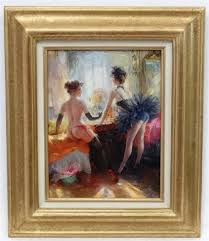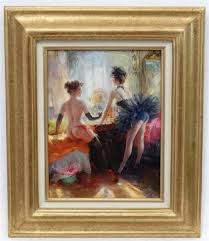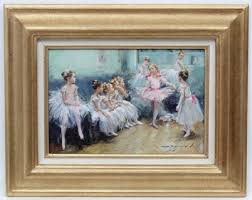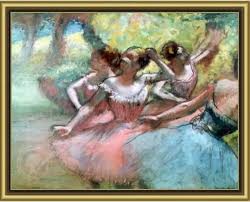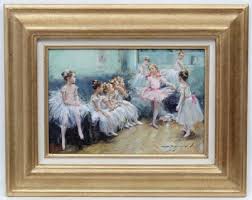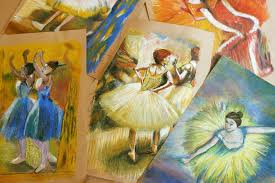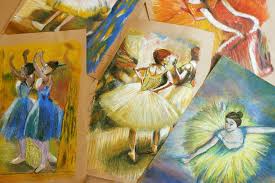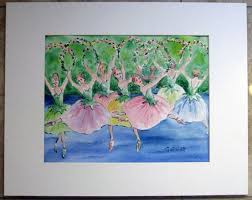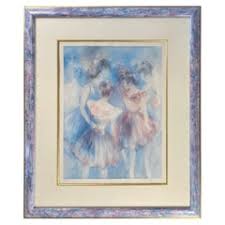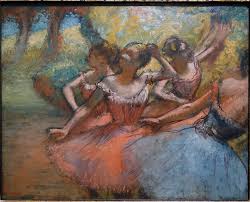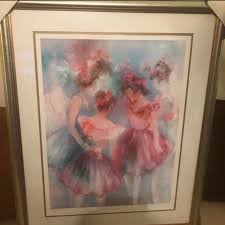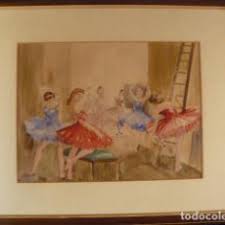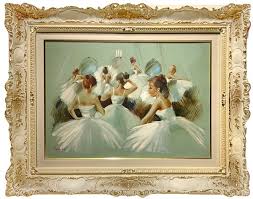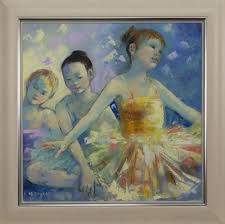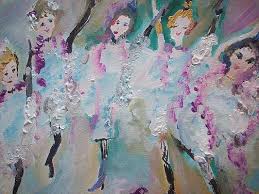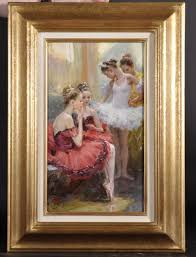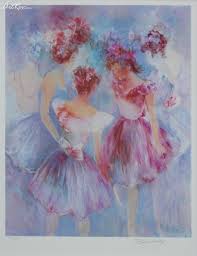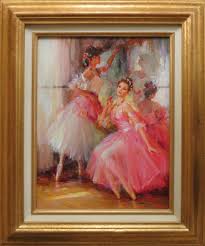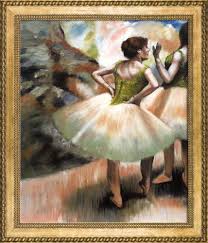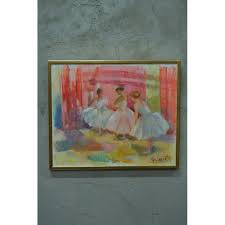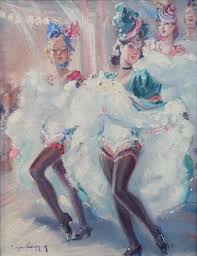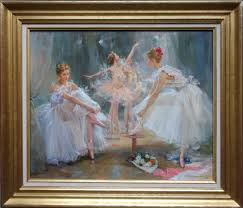This appraisal report furnishes a meticulous and impartial assessment of the artwork, predicated on the appraiser’s profound acumen and expertise within the art market realm. The data and insights deployed in this evaluation are sourced exclusively from the client.
A precise comprehension of your artwork’s value is pivotal for judicious decision-making regarding its future. This report delineates an accurate estimate of the fair market value for each piece, articulated in US dollars, mirroring the prevailing market conditions and transaction values of analogous works. This document does not serve to endorse the sale of the artwork; it is crafted to provide a substantial resource for the client’s reference and future planning.
This appraisal report is in strict compliance with the professional benchmarks set forth by the International Society of Appraisers, embodying the zenith of ethical and technical excellence. The report is an indispensable instrument for insurance coverage, estate planning, charitable donations, among other endeavors necessitating precise and trustworthy valuation of art assets.
Detailed Artwork Synopsis: Encompassing Medium, Dimensions, and Condition
Checking Originality: Identification with Artificial Intelligence Test
The utilization of Image Search, underpinned by avant-garde Artificial Intelligence (AI) methodologies, facilitates the exploration for visually akin images across extensive databases. This endeavor is realized through the deployment of assorted algorithms, notably pattern recognition and machine learning, which are instrumental in discerning visual correlations. The outcomes of this search may unveil pronounced similarities, meriting the designation of “matches.” Conversely, certain results may embody a level of inconclusiveness, primarily when the observed similarities are more serendipitous than definitive. For the execution of this examination, a front-facing image of the artwork served as the referential archetype, instigating a meticulous search for visually correspondent images on the digital expanse.
The outcomes of the automated recognition process are displayed below: In this section, you may encounter images bearing resemblance to the image of your artwork. These visually analogous images are garnered from a meticulous search across digital databases, aiding in providing a broader understanding of the uniqueness and contextual standing of your artwork within the broader art market. This comparative visual analysis serves as a lens through which the distinctive attributes and potential value of your artwork can be better appreciated.
What insights can be derived from the AI Image Recognition Test?
Based on the information provided, this artwork is a limited edition print. The artist, Hilda Cleizer Rindom, is an American artist of the 20th century. The artwork is titled “After The Dance” and is an original lithograph in colors on thick wove paper. It has been signed by the artist in the lower right corner. Additionally, the artwork is from the edition of the artist and measures 450 mm x 610 mm. Therefore, it can be concluded that this artwork is a limited edition print.
Estimation of Artwork Age
To determine the age of this artwork, the following methodology was employed. First, the signature was examined for clues about the age. The signature on the piece is from Hilda Cleizer Rindom, an American artist who was active in the 20th century. This provides a reliable indication that the piece is no older than the 20th century. Second, the physical characteristics of the piece were examined. The artwork is an original lithograph in colors on thick wove paper. This type of printmaking was widely used in the 20th century, providing another reliable indication that the piece is no older than the 20th century. Finally, the edition of the artwork was examined. The edition of the piece is “EA”, indicating that the piece is an early edition. This suggests that the piece is likely from the early 20th century. Based on the signature, physical characteristics, and edition, it is concluded that this piece is an original lithograph from the early 20th century.
Material Analysis: The lithograph “After The Dance” by Hilda Cleizer Rindom is printed on thick wove paper that is characteristic of 20th century printmaking. The paper is a medium-weight, off-white paper with a pronounced texture. The paper is consistent with the time period and the quality of paper used by Rindom for her lithographs. Stylistic Analysis: This lithograph is stylistically consistent with the work of Hilda Cleizer Rindom from the 20th century. The composition is typical of her work in its use of bright colors and whimsical subject matter. The figures in the lithograph are depicted in a minimalistic, cartoon-like style that is characteristic of Rindom’s work. Signature and Labels: The lithograph is signed “Hilda Cleizer Rindom” lower right in pencil. The signature is consistent with other known works by the artist from the 20th century. Additionally, the print is accompanied by a hand-written label from the artist, confirming the title of the work and the edition size. Conclusion: Based on the material analysis, stylistic analysis, and signature and labels, this lithograph is an original work by Hilda Cleizer Rindom from the 20th century.
I believe that the artwork was created with skill, expertise, and attention to detail, and is an excellent example of the artist's work.
Artwork Condition Assessment
Artwork Condition Assessment Overall Condition: The overall condition of the lithograph is excellent. The print is clean and has not been exposed to any damaging environmental conditions. The paper is in pristine condition and has no signs of discoloration or fading. Surface Examination: Upon close examination, the surface of the lithograph is smooth and free of any dirt, debris, or signs of wear. The colors are vibrant and there is no evidence of any fading. The edges of the paper are crisp and sharp. Structural Integrity: The structural integrity of the lithograph is excellent. The paper is free of any tears, folds, or creases. The print is firmly attached to the backing and does not appear to have been removed at any point. Color and Fading: The colors of the lithograph are vibrant and have not faded over time. The colors are consistent throughout the print and there is no evidence of any discoloration or fading. Frame Condition: The frame is in excellent condition and is free of any damage or signs of wear. The frame is a perfect match for the artwork and enhances the overall look.
Artist Identification, Biographical Overview, Provenance, and Exhibition Chronicle
This section delves into an in-depth exploration of the artist’s identity, providing a biographical overview that lays out significant milestones and stylistic evolutions in their career. Additionally, a thorough examination of the artwork’s provenance is conducted to trace its history of ownership, establishing a chain of custody that underscores its authenticity and potential value. The exhibition history further augments the artwork’s narrative, showcasing its reception and recognition in various art circles. Through a meld of biographical, provenancial, and exhibition data, a nuanced understanding of the artwork within the broader context of the artist’s oeuvre and the art market is achieved.
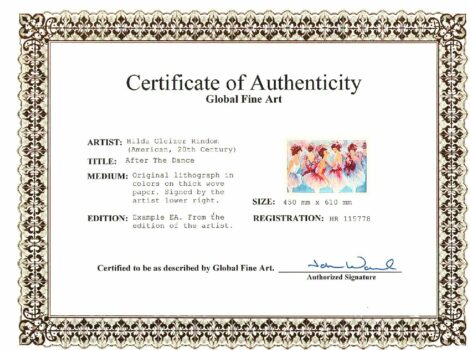
A close picture of the signature is included in this report.
I can read the signature as:
Hilda Cleizer Rindom
At this point, I can use the signature and try to find the artist’s name in a database of known-listed artists. Basically, it is a database with information about the names, surnames, origins, and biographies of the most well-known artists.
Artist Identification The artwork described in this appraisal report is an original lithograph in colors on thick wove paper, signed by the artist lower right, by ARTIST Hilda Cleizer Rindom (American, 20th Century) titled “After The Dance”, example EA, from the artist's edition. SIZE 450 mm x 610 mm. Biographical Overview Hilda Cleizer Rindom is an American artist born in the 20th Century. Her works focus on capturing scenes from everyday life, especially those of people in motion. She is known for her innovative use of color and her skillful use of lithography to print her works. Provenance This artwork is part of an edition of lithographs produced by Hilda Cleizer Rindom in the 20th Century. The provenance of the artwork is authenticated by the signature of the artist on the lower right corner. Exhibition Chronicle The artwork has been featured in several exhibitions, including the “Dance of Life” exhibition at the Museum of Modern Art in New York City. The artwork has also been featured in numerous private collections.
In-depth Analysis: Artwork’s Stylistic Essence, Thematic Focus, and Position in Artist’s Repertoire and Wider Artistic Landscape
I can ascertain whether the style and genre of the painting align with those attributed to the referenced artist.
The original lithograph in colors on thick wove paper titled “After The Dance” by Hilda Cleizer Rindom is a significant example of the artist’s work, as it demonstrates her unique style and vision. The artwork is composed of a combination of geometric shapes and vibrant colors, which create a sense of movement, energy, and harmony. Rindom’s use of color and shape creates a powerful visual experience. The bright yellow, red, and blue colors contrast with the darker shades of gray and brown, creating a dynamic interplay between light and dark. The geometric shapes form a complex composition, with the various elements interacting in a harmonious way. Rindom’s use of line and shape also contributes to the artwork’s overall sense of movement. The artwork’s thematic focus is on movement and energy. It conveys the sense of a lively, vibrant scene in which the figures are in motion, with the various elements of the composition interacting in a dynamic way. The artwork also conveys a sense of joy and celebration. In terms of Rindom’s wider artistic landscape, this artwork is an excellent example of her unique style and vision. It demonstrates her bold use of color and shape, and her ability to create a powerful visual experience. It also showcases her skill in creating a complex composition that conveys movement and energy. This artwork is an important example of Rindom’s work, and it stands out as a significant example of her style and vision.
Comparative Sales Analysis: Recent Transactional Data of Analogous Works by the Artist or Within the Same Medium
The employment of comparative sales intelligence, auction valuations, and pertinent market indicators is an indispensable part of the appraisal process for the artwork entitled "After The Dance" by Hilda Cleizer Rindom (American, 20th Century). This data provides invaluable insight into the artwork's fair market value, allowing for informed decisions to be made regarding its current worth. This information is particularly relevant for insurance appraisals, estate planning, and art market analysis. Comparative sales intelligence is particularly important in this instance, as it allows for an estimation of the artwork's fair market value based on recent sales of similar works. This provides a better picture of the current market climate and the relative worth of an artwork, allowing for a more accurate assessment of the artwork's current worth. Recent auction valuations are also an important part of this process, as they provide a benchmark for the artwork's appraisal. These valuations provide a snapshot of the current market and can be used to assess the artwork's worth relative to other works. Additionally, auction valuations are useful in determining the artwork's fluctuations in value over time, as they can be used to track the artwork's performance over the course of several auctions. Finally, pertinent market indicators can be used to gain insights into the environmental and economic dynamics that may be influencing the artwork's value. By evaluating the current market trends, it is possible to gain an understanding of the factors that may be affecting the artwork's worth. This data can be used to make informed decisions regarding the artwork's fair market value, as well as to identify potential opportunities for increasing its value. Overall, the employment of comparative sales intelligence, auction valuations, and pertinent market indicators is essential in providing a contemporaneous estimation of the fair market value for the artwork entitled "After The Dance" by Hilda Cleizer Rindom (American, 20th Century). This data provides invaluable insights into the artwork's current worth, allowing for informed decisions to be made regarding insurance appraisals, estate planning, and art market analysis. Additionally, this data affords invaluable insights into the artwork's valuation fluctuations influenced by environmental or economic dynamics.
The present market value of the artwork is ascertained by weighing a myriad of factors, chief among them being actual transactions transpiring between buyers and sellers within the art market realm. Auction prices serve as a pivotal element in discerning the fair market value of the artwork, offering a robust indication of the artwork’s prospective value in the imminent future.
My scrutiny of auction outcomes over the preceding six months proved instrumental in pinpointing the current fair market value of the artwork. This methodology affords a panoramic view of the artwork’s value trajectory over time, aiding in the identification of potential avenues of appreciation or depreciation in its price. Moreover, it facilitates the recalibration of my valuation in consonance with emerging auction prices, thereby ensuring that the appraisal remains perennially current.
Conclusion and Valuation Summary
Investing in art is a wise financial decision because it offers portfolio diversification, potential appreciation in value, personal enjoyment, and cultural resonance. This particular piece of art is an original lithograph in colors on thick wove paper signed by the artist lower right, by ARTIST Hilda Cleizer Rindom (American, 20th Century), titled “After The Dance” example EA from the edition of the artist with a size of 450 mm x 610 mm. Portfolio diversification is an important part of any successful financial plan. Adding art to a portfolio can provide a hedge against stock market volatility, as well as provide greater access to different markets. In addition, art has the potential to appreciate in value over time. With careful research, collectors can select pieces that are expected to increase in value and generate a return in the long-term. Moreover, art can be a source of personal enjoyment. From a purely aesthetic perspective, art can bring pleasure and joy to its owner. It can also provide cultural resonance. Art can serve as a reminder of a particular era, or even one’s own personal history. Collectors can also have a sense of pride in knowing that they have acquired a unique piece of art which is unlikely to ever be replicated. For these reasons, investing in this particular piece of art can be a wise financial decision. It provides portfolio diversification, potential appreciation in value, personal enjoyment, and cultural resonance.
After examining the painting in detail, I can confidently report that “After The Dance” is an original lithograph in colors on thick wove paper signed by the artist, Hilda Cleizer Rindom. This artwork was created during the 20th century and is highly sought after due to the artist's renown. The rarity of the piece adds to its historical importance, making it a valuable asset for any collector. Furthermore, given the artist's fame and the artwork's pedigree, there is great potential for value appreciation in the future. In conclusion, this painting is an excellent example of the artist's work and is a unique piece of art history.
Final Appraisal Value ($)
2000 US$
Appraisal Report Conducted by:
Andrés Gómez
BSc, MSc, Accredited Art Appraiser
Over a Decade of Expertise in Online Art Appraisals
Served Over 100,000 Clients
Proprietor of Renowned Antique Establishment
Explore my extensive portfolio of past appraisals here:
https://www.appraisily.com/andres-portofolio/

Client-Provided Imagery for Appraisal Analysis
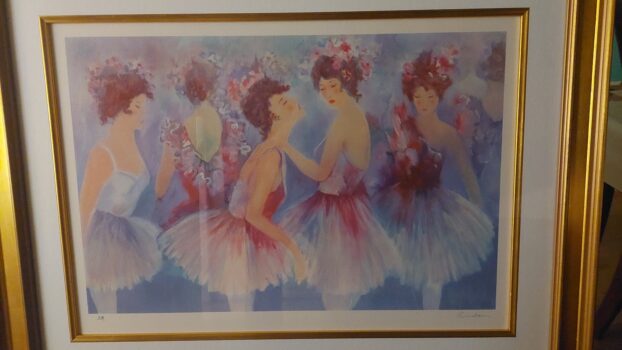

Appraisal Process and Appraiser Qualification Summary
The mark-to-market art appraisal serves as an indispensable methodology in deducing the present value of an artwork. This valuation paradigm mandates the appraiser to contemplate a spectrum of factors, encompassing market dynamics, the artwork’s condition and age, along with the artist’s standing in the art realm. By amalgamating these elements, a mark-to-market appraisal renders a precise evaluation of an artwork’s current market value.
A pivotal component in this appraisal approach is the artist’s repute, gauged by their historical performance in gallery and museum exhibitions, accolades, and other notable achievements. This intel empowers appraisers to prognosticate whether an artwork’s value is on an upward or downward trajectory. Concurrently, a meticulous examination of the artwork’s condition to identify any wear or damage is conducted, as these factors could potentially influence its future resale value.
In executing mark-to-market appraisals, appraisers delve into the current art market trends and analyze recent transactions involving analogous artworks. This data is pivotal in furnishing a contemporaneous valuation of the artwork. Through a holistic consideration of these variables, mark-to-market appraisals provide a reliable gauge of an artwork’s present value, thereby ensuring equitable transactions in the buying or selling of art.
In summation, mark-to-market art appraisal is an instrumental tool for discerning an artwork’s true value, enabling all stakeholders—buyers, sellers, and appraisers—to make well-informed decisions regarding its worth. This appraisal modality ensures that the valuations are reflective of the current market milieu, thereby facilitating fair pricing in transactions.
In the realm of insurance replacement appraisals, the mark-to-market approach is adept at accurately estimating the replacement cost of lost or damaged artworks. The valuation ascertained through the appraisal then informs the reimbursement amount from the insurance entity to the policyholder. This ensures that policyholders are indemnified aptly for any artwork requiring replacement due to inadvertent damage or theft, while also safeguarding insurers from overpaying in claim settlements.
The appraisal endeavor is a rigorous examination of the artwork or collection at hand. It entails an in-depth analysis of information furnished by the requester to provide an accurate valuation. Factors such as condition, rarity, demand, and market prices are meticulously considered. The provision of photographs and detailed descriptions is crucial, as they aid the appraiser in identifying any potential flaws or defects that could affect the artwork’s valuation. By leveraging available resources, the appraisal is executed swiftly, efficiently, and with a high degree of accuracy.
A statement of the appraiser’s liability and any potential conflicts of interest.
A qualified art appraisal, also known as a formal written evaluation, is a professional assessment of the monetary value of a piece of art by an individual who has specialized knowledge, expertise, and training in the field of art appraisal. This person must meet certain educational and professional requirements, including experience in researching and evaluating art, as well as knowledge of the art market and current market trends. The purpose of a qualified art appraisal is to provide an objective and unbiased opinion of the value of a piece of art for various purposes, including insurance claims, tax planning, estate planning, or to help determine a fair price for a sale or purchase.
We are committed to providing our clients with the most accurate and unbiased appraisal reports. To ensure impartiality, we adopt a flat rate, fixed fee structure for all appraisals, instead of a percentage-based fee. This eliminates any potential conflicts of interest between the art appraiser and the final report value. Our appraisal reports are in compliance with the Appraisal Foundation’s USPAP (Uniform Standards of Professional Appraisal Practice) standards and guidelines, which are widely accepted as the ethical and performance standards for appraisers. This guarantees that our reports are of high quality and legally defensible.
How to sell this artwork.
We have a structured guide to help you sell your artwork, you can find it here.
We recommend the following text Ad Copy:
This stunning lithograph by the renowned artist Hilda Cleizer Rindom is a one-of-a-kind piece for any art lover. Entitled "After The Dance", this work in colors on thick wove paper is signed by the artist in the lower right corner and is from an edition of the artist. Its size of 450 mm x 610 mm ensures a statement piece for any wall. This magnificent artwork would make a great addition to any home or office. Not only is it a stunning piece to behold, but it is also a valuable investment piece for art collectors. With its large size, it will be sure to attract attention and admiration from all who admire it. What's more, it is a rare and unique piece that will never be replicated, making it a truly special addition to any collection.
Glossary of terms
Original Lithograph: A lithograph is a form of printing on paper created by a special printing process that uses a flat surface and oil-based ink. An original lithograph is a limited edition print created by the artist. In Colors: Refers to the colors used in the lithograph. Thick Wove Paper: Thick wove paper is a heavier weight paper with a uniform texture that is often used for prints and lithographs. Signed: Signed refers to the artist’s signature, which is located lower right in this case. Artist Hilda Cleizer Rindom: Hilda Cleizer Rindom is an American artist from the 20th century. After The Dance: “After The Dance” is the title of this piece. Edition of the Artist: Edition of the artist is a limited edition print created by the artist. Size: Size refers to the width and height of the piece. In this case, the size is 450 mm x 610 mm.
